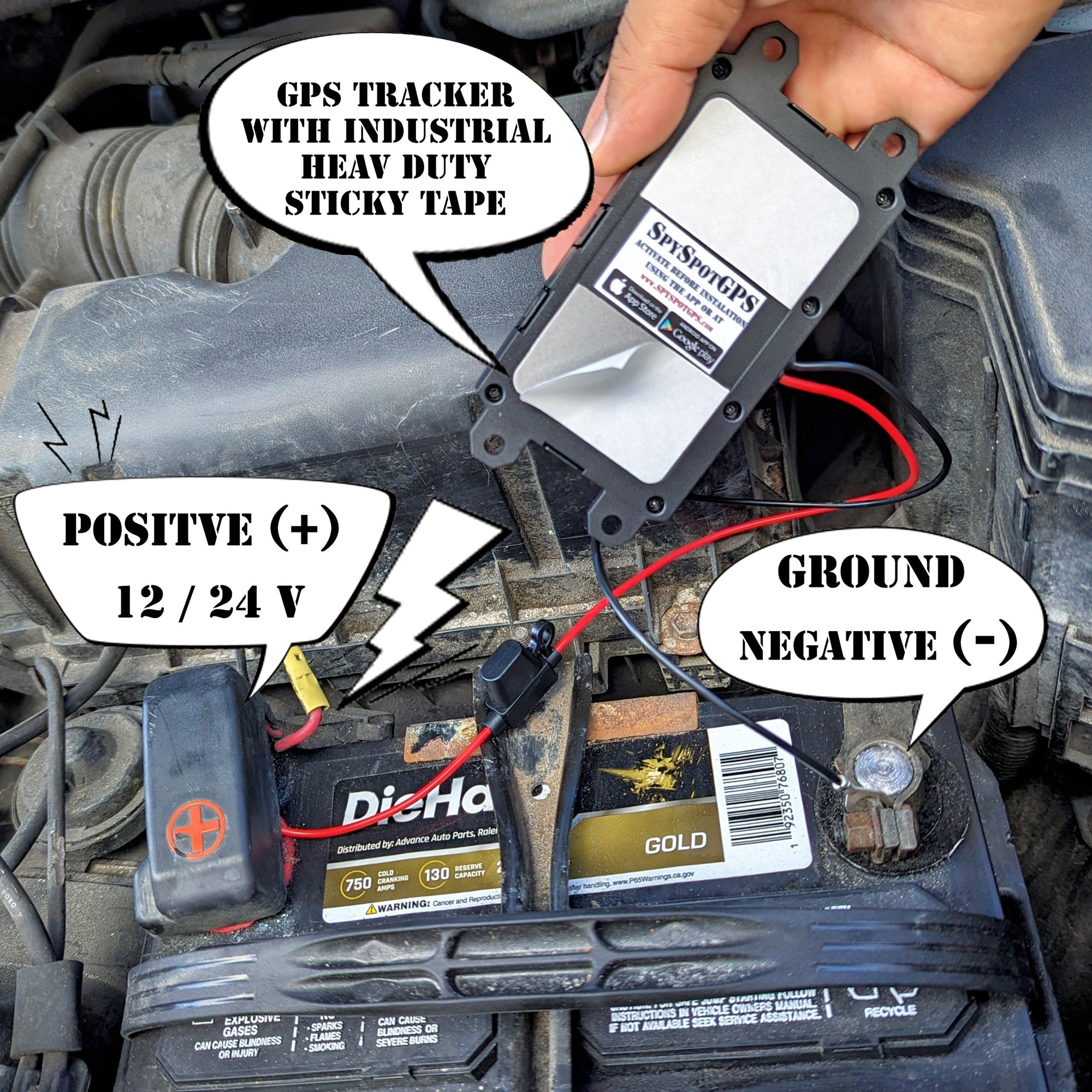Charging a GPS tracker is essential for keeping it operational and ensuring reliable tracking for vehicles, pets, loved ones, or valuables.
In this guide, we’ll explain how to charge a GPS tracker, provide tips for optimizing battery life, and highlight Spy Spot’s GPS trackers with long-lasting batteries.
Types of GPS Trackers and Charging Methods
The method of charging a GPS tracker depends on its type. Here’s a breakdown:
1. Portable GPS Trackers
Portable GPS trackers are compact, battery-powered devices designed for flexibility. They can be carried in bags, attached to vehicles, or used on pets or people.
How to Charge:
- Connect the tracker to a power source using the included USB cable or charging dock.
- Plug the other end into a wall adapter, power bank, or USB port on a computer.
- Allow the device to charge fully, as indicated by the tracker’s LED light or app notification.
Example: The 4G LTE Portable GPS Tracker kit includes a rechargeable battery that lasts up to 3 weeks on a single charge, making it ideal for versatile tracking.
2. Hardwired GPS Trackers
Hardwired GPS trackers are permanently installed in a vehicle and connected to the car’s battery. These trackers draw power directly from the vehicle’s electrical system, eliminating the need for manual charging.
How to Charge:
- No manual charging is required. The tracker remains powered as long as the vehicle battery is charged.
Example: The Hardwired GPS Tracker from Spy Spot offers continuous tracking without battery concerns.
3. Solar-Powered GPS Trackers
Solar-powered GPS trackers include built-in solar panels to recharge the battery. They are ideal for outdoor use, such as tracking vehicles, boats, or equipment left in remote locations.
How to Charge:
- Place the tracker in direct sunlight for optimal charging.
- Use the USB cable to charge it manually when sunlight is insufficient.
Example: The Micro GPS Tracker combines solar power with extended battery life for long-term tracking.
4. OBD GPS Trackers
OBD GPS trackers plug into a vehicle’s OBD-II port and draw power directly from the car’s electrical system. Like hardwired trackers, they don’t require manual charging.
How to Charge:
- No manual charging is needed. The device charges as long as it’s plugged into the OBD-II port.
Example: The OBD 2 GPS Tracker provides continuous power and real-time tracking.
Charging Tips for GPS Trackers
-
Follow Manufacturer Guidelines
Always use the charger and cable provided with the tracker to prevent damage or suboptimal performance. -
Charge Fully Before First Use
Fully charge the device before its first use to maximize battery health and tracking accuracy. -
Monitor Charging Indicators
Pay attention to LED lights or app notifications to know when the tracker is fully charged. Overcharging can shorten battery life. -
Use Power-Saving Modes
Some trackers have power-saving modes that activate when the device is stationary, conserving battery life and reducing the need for frequent charging. -
Keep Backups Ready
For portable trackers, carry a power bank or spare battery to recharge on the go. Get an extended battery pack for your portable GPS Tracker here <<<
How Long Does It Take to Charge a GPS Tracker?
The charging time depends on the tracker’s battery capacity and charging method:
- Portable GPS Trackers: Typically take 2-4 hours to fully charge.
- Solar-Powered Trackers: Charging time depends on sunlight exposure and battery size.
- Hardwired and OBD Trackers: No charging time required as they draw power continuously.
Frequently Asked Questions
-
How do you charge a GPS tracker?
For portable GPS trackers, use the included USB cable to connect the device to a power source. Hardwired and OBD trackers don’t require manual charging, as they are powered by the vehicle’s electrical system. -
How long does a GPS tracker battery last?
Battery life varies by model. Portable trackers can last anywhere from 2 weeks to 8 months on a single charge, while hardwired and OBD trackers provide continuous power. -
Can I use a power bank to charge my GPS tracker?
Yes, portable GPS trackers can be charged using a power bank for added convenience when you’re on the go.
Conclusion
Knowing how to charge your GPS tracker ensures it remains functional and reliable for tracking vehicles, pets, or loved ones. Whether you’re using a portable tracker, a solar-powered device, or a hardwired solution, Spy Spot has a range of options tailored to your needs.
Ready to find the perfect GPS tracker? Contact Spy Spot today at +1 (561) 279-3939 or visit our Deerfield Beach store for expert advice and to explore our complete selection of GPS tracking devices.






